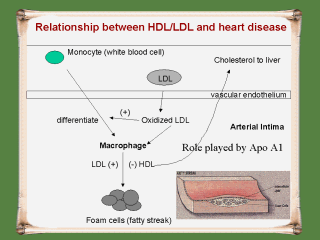 |
The primary
mechanism by which HDL and apoA-I and apoA-I mimetic peptides exert their
beneficial effect has been presumed to be the enhancement of reverse
cholesterol transport. However, apoA-I has also been shown to be capable of
removing "seeding molecules" from LDL, thus preventing the oxidation of
LDL-derived phospholipids to those that are thought to be responsible for
the inflammatory response characteristic of atherosclerosis. The LDL
treated with apoA-I was unable to generate lipid hydroperoxides, nor was it
able to induce monocyte adherence or monocyte chemotactic activity when
added to human artery wall cocultures.
|
